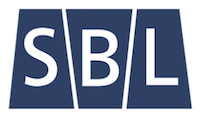
Setting rates is often up to indexers — we get a query about a project and respond with a quote. Sometimes, though, it works the other way around, and we get approached with a rate from a potential client. When the rate is just fine, our answer is mainly determined by our schedules and our skill sets. Sometimes, though, the rate is just not enough. Here, most of us think two things can happen: We say yes, or we say no. But there is a third option, and that’s negotiation.
“But I could lose that job!” you think. Nope, you can’t lose what you don’t have. If they say no, you say thanks anyway, and move on with no less money in the bank than you had before.
Rate negotiation is definitely worth it, especially if the original rate being offered is too low to take. Then the worst that happens is they say no and you walk away from it.
Calculating Your Rate
The first thing you have to know when negotiating a rate is what your minimum acceptable rate (MAR) is. You should know this already, but if you don’t, it’s pretty simple. Here’s how to do it:
Income needs / hours available = hourly rate
Now, freelancers don’t often work for an hourly rate, so you’ll also need translate that into a page rate:
Hourly rate / pages per hour = $ per page
Your income needs and hours available will vary, depending on how many other projects you have on your schedule. If you’re already booked, you may be more willing to set a higher MAR. If you are in a dry spell, maybe your walk-away rate can be a bit lower. It’s up to you to decide where you’re going to open negotiations, but understand you may get a counteroffer. On the other hand, the client may happily agree to your offer.
So that’s the easy part — we all should know how much we need to make, and how much we’d like to make. It’s up to you to decide where you’re going to open negotiations. You can come in with your MAR.
The hard part is what comes next: asking.
Making Your Case
This is hard to do, but remember, you have nothing to lose. You do have a lot to gain, and you want to have a good relationship with your clients. There’s more to indexing than just making money. Most of us do this job because we like the work. It’s interesting and varied, and figuring out how to break down a text and make information accessible is a fun intellectual puzzle.
When responding to a potential client, you want to show you would like to work with them. For me, I often wish time and money were unlimited so I could say yes to every fascinating new subject that’s offered. Rate negotiations are all about trying to find a way to be able to work together. To say yes without ending up intellectually stimulated but burned out and miserable, unable to pay your bills. It’s not about trying to squeeze every last cent out of your clients.
Consider offering a choice — there’s the old saw about “Fast, good, cheap; pick two.” So give them the chance to pick. Offer their rate but with a longer deadline, or a higher rate with their deadline, and then let them decide what works best.
Two-Way Street
On that note, it’s worth keeping in mind that negotiations work both ways, too. Clients will sometimes respond to a quote to ask if you can lower your rate. Whether or not you can — or should — depends on many factors. What’s your minimum acceptable rate? What does your schedule look like right now — would taking this project give you a decent hourly rate but terrible working hours?
Why is the client asking for a lower rate? Often, authors are responsible for paying for their own indexes, and they’re squeezed financially. Academic departments don’t always help foot the bill from grants, or the budget is already long blown by the time the index has to be done. Or, is someone trying to get more for less? The 2021 American Society for Indexing salary survey shows that full-time indexers’ hourly rate ranges between $30 and $50.
It’s up to you to balance the various factors that go into agreeing to a lower rate — on the one hand is client goodwill, or filling an otherwise-empty gap, or experience, or just being able to and being interested in the project. On the other is contributing to lower rates across the industry, or selling yourself short, or having to work exhausting hours and not do your best work.
Final Thoughts
One other great reason to negotiate rather than just turn down an offer is the opportunity to educate. If clients don’t know what they’re offering is too low, they won’t ever offer more. You don’t have to give them all the details — they’re not your mortgage broker — but just a simple, “This rate is much lower than my usual rate, which is X,” can do the trick.
Resources
Indexing Speed
RescueTime is a great way to track your work. It runs in the background on your computer, and the free version breaks down your time by application. It’s hands-off, so you don’t have to remember to toggle a stopwatch or record stop-start times in a spreadsheet; you just look at your RescueTime dashboard and add up all the hours spent in the applications you use for indexing.
OfficeTime is a robust app for tracking projects, so if you can remember to use it, it is great for the data nerds out there.
I sometimes simply use grid paper and, using one square per hour, write my goal page quota, then next to that, I fill in one square per hour and write down the actual pages covered. This helps me adjust my plans for the next day, especially if I’m falling behind, and refine my hourly page average for use in calculating future rates.
Industry Rates
The Editorial Freelance Association’s rate chart is an excellent resource, as is the Society of Indexers’ information on recommended rates. There is also a publicly available executive summary of the ASI Salary Survey mentioned above on the ASI website.



Leave a Reply